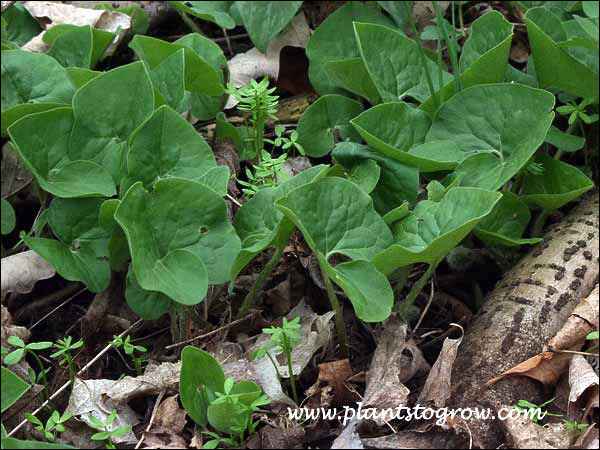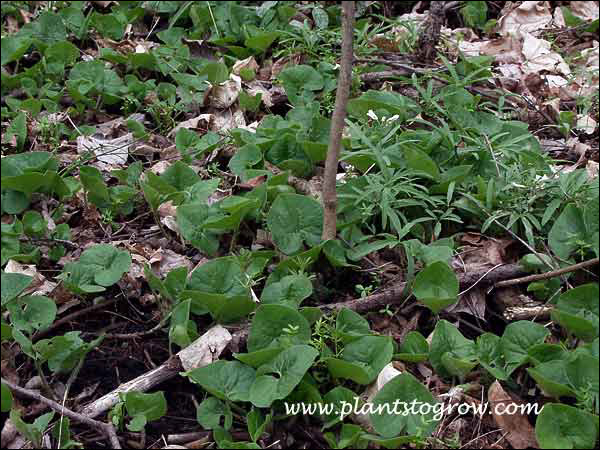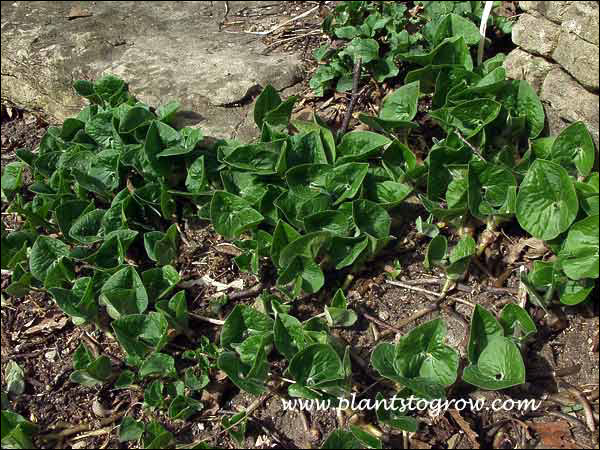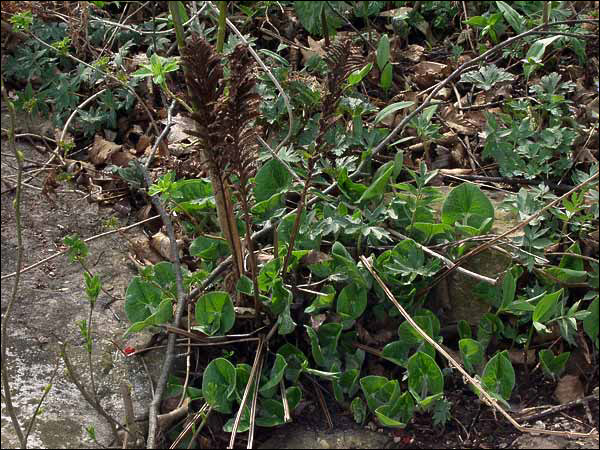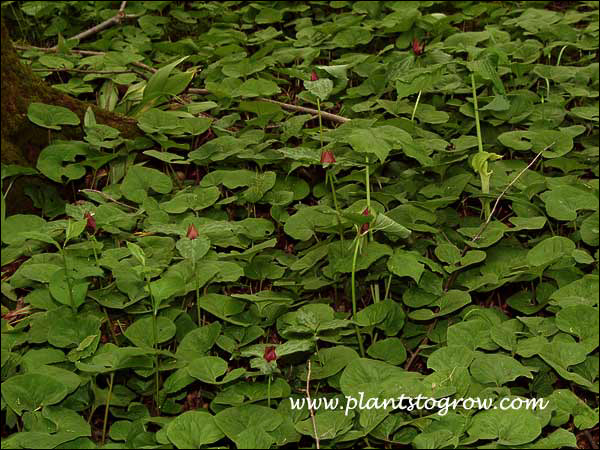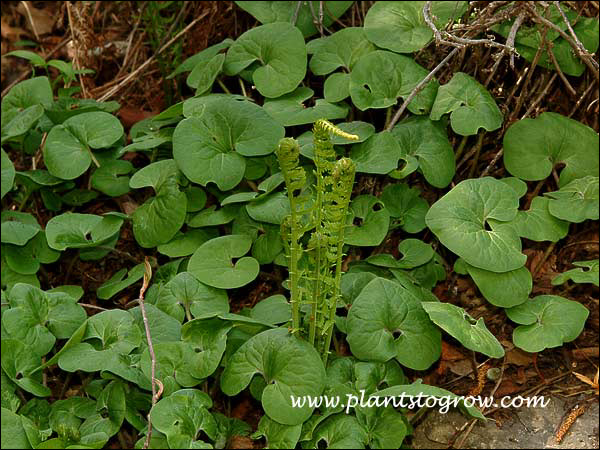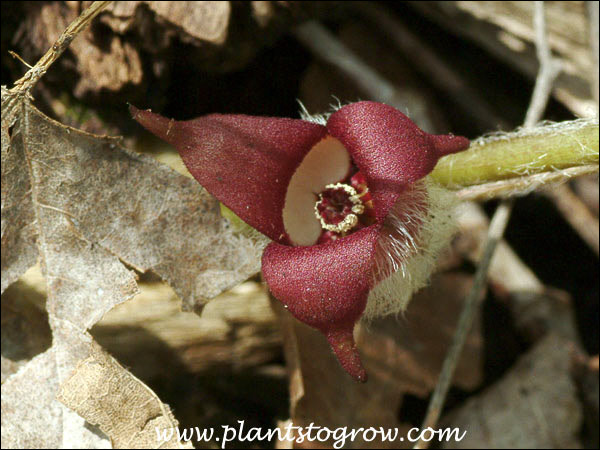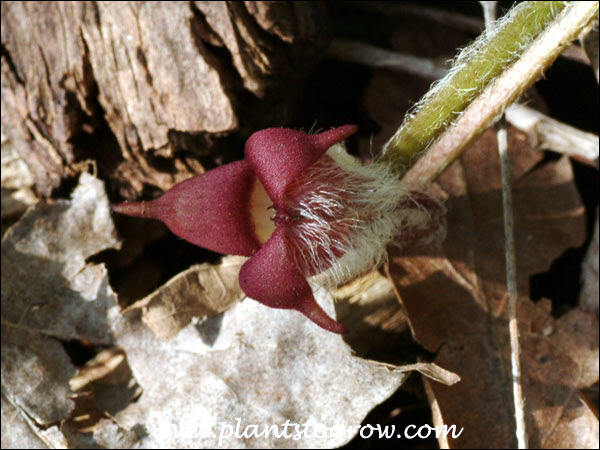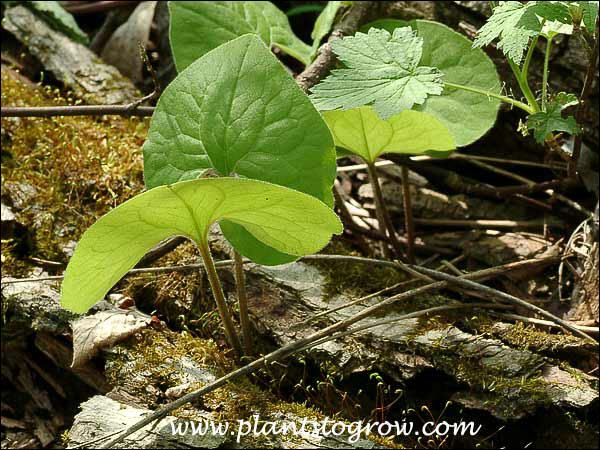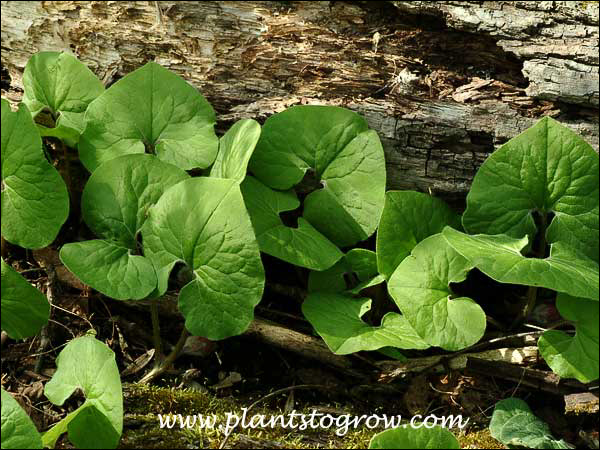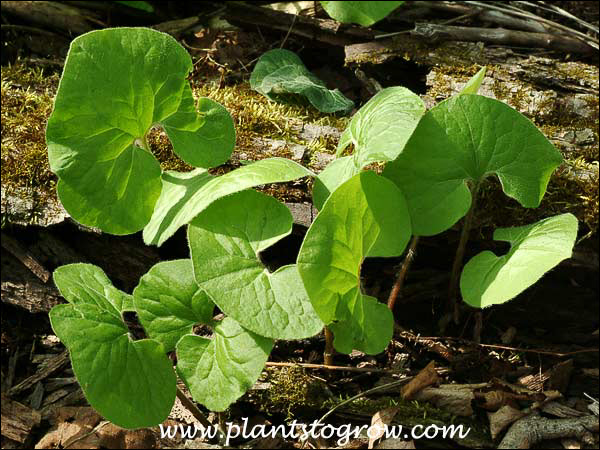| Description | Canada Ginger (Asarum canadense) A native low growing perennial herb found in deciduous forests. Needs shade, moist, rich moderately acid soil. |
|---|---|
| Plant Type | Wild Flowers |
| Hardiness Zone | 3 |
| Sunlight | shaded areas of deciduous forests, likes spring full sun and summer shade |
| Moisture | moist |
| Soil & Site | Prefers rich, humus rich, moderately acid (ph 4.5-6.0)soils. |
| Flowers | small 1-2", reddish brown, found at the base of the leaf stalk, 3 sepals overlap forming a cup or tube-shape, the sepals are recurved at the top of the flower, hairy at the base, usually only one flower per plant, many times buried in the leaves attracting forest floor dwelling insects, they seek refuge in the flower, flowers mid to end of April, flowers have been to found to self pollinate |
| Fruit | Seeds have elaiosomes, which are fleshy structures rich in fats and proteins. The ants (myrmecochory) collect the seeds and return them to the nest to eat the elaiosomes. This helps disperse the seeds. |
| Leaves | almost triangular shaped leaves, 3-6" wide are deeply notched at the base, two leaves are found at the tip of the rhizome on short hairy petioles, soft and velvety due to the pubescence. |
| Stems | spreads by rhizomes which will form an entangled mat, crushed rhizome will smell like ginger |
| Roots | 'The roots of Wild Ginger produce a scent that is similar to ginger. Fresh or dried roots (rhizomes) were used by early Americans as a ginger substitute, but the plant is not normally used today for culinary purposes." (#224) |
| Dimensions | less than 6", spreads |
| Maintenance | forms colonies |
| Propagation | Division of the rhizomes in the early spring. |
| Native Site | A native wild flower with a range from SE Canada and eastern USA, west to Minnesota |
| Misc Facts | This is not the same species as the tropical ginger used in cooking. AKA: Wild Ginger, Canada Ginger, Indian Ginger, Ginger-Root |
| Author's Notes | I have seen this plant many times growing in moist deciduous forests. Likes the spring sun and summer shade. In one nature conservancy the slight moist depressions are tightly packed with Canadian Ginger. |
| Notes & Reference | #13-Growing Woodland Plants, #41-Wildflowers of Wisconsin, #61-How to Recognize Flowering Wild Plants, #68-Ground Covers for The Midwest, #224-Prairie Nursery website (www.prairienursery.com), #289-Spring Wildflowers of the UW-Madison Arboretum (Andrew L. Hipp), #274-Site Authors' observations and growing experiences |

Cart
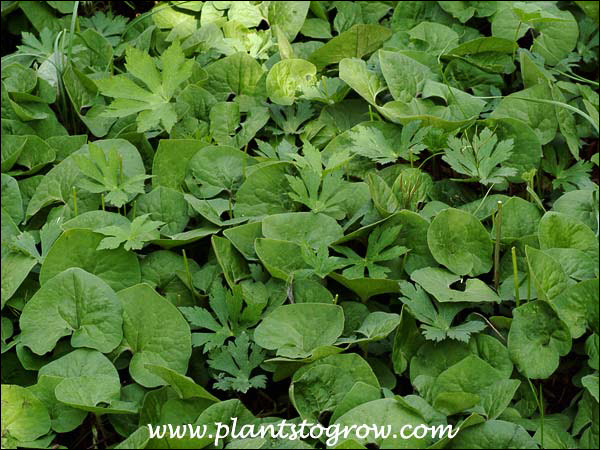
-02cm.jpg)
-03cm.jpg)
-04cm.jpg)
-05cm.jpg)
-01cmx.jpg)
